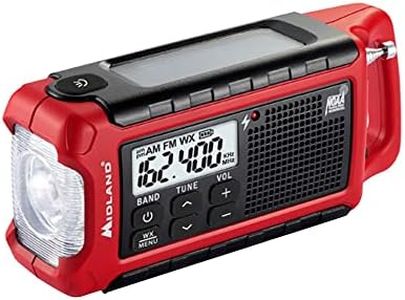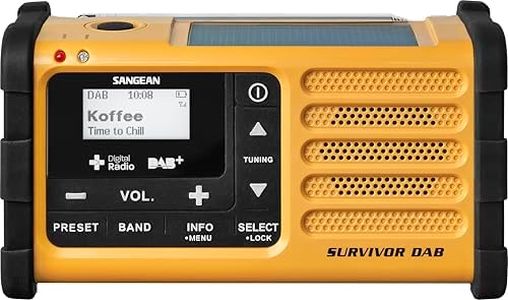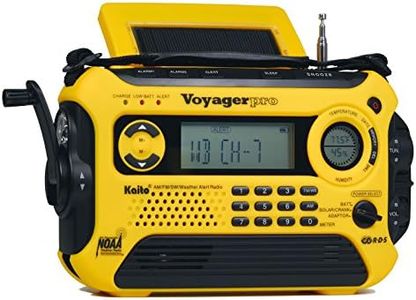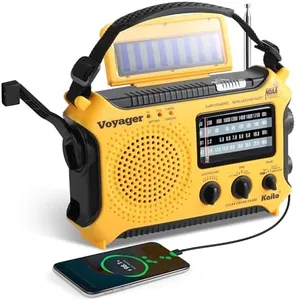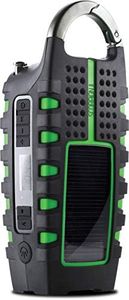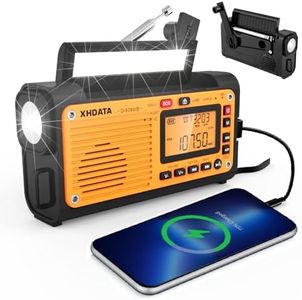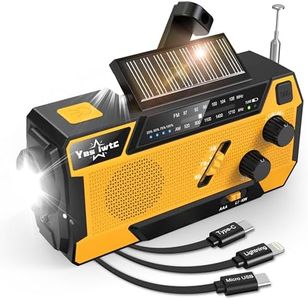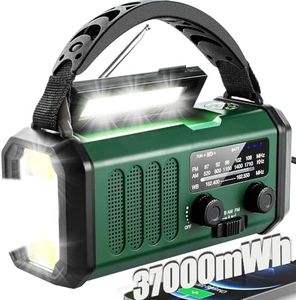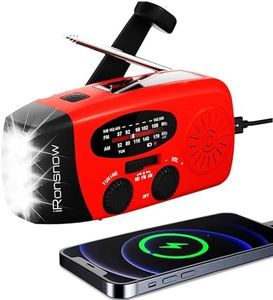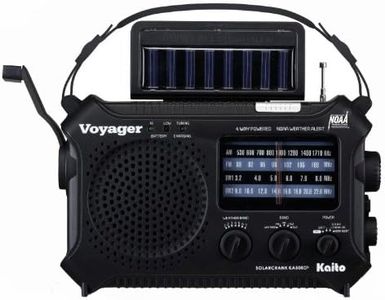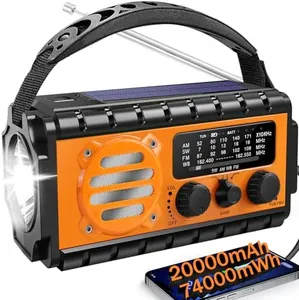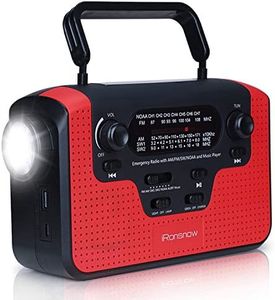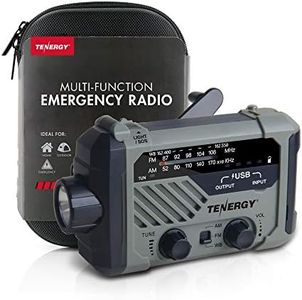We Use CookiesWe use cookies to enhance the security, performance,
functionality and for analytical and promotional activities. By continuing to browse this site you
are agreeing to our privacy policy
10 Best Emergency Crank Radios
From leading brands and best sellers available on the web.Buying Guide for the Best Emergency Crank Radios
Choosing an emergency crank radio is all about making sure you have a reliable way to stay informed and powered up during emergencies. Since these devices can be crucial when the power goes out or when you're off the grid, you'll want to select features that make it easy for you to receive information, generate power manually, and stay connected to loved ones or first responders. Think about where and how you might use the radio: Is it for home emergency kits, camping, or travel? Keep your environment and needs in mind as you evaluate the different features.Power SourcesPower sources refer to how the radio can be charged or powered. A good emergency radio usually offers multiple power options: crank handle, solar panel, batteries, and sometimes USB charging. Crank handles let you manually generate power, solar panels are useful for daytime charging, and battery or USB options provide convenience during non-emergency times. If you want a radio mainly for blackouts, prioritize crank and battery use. For outdoor use or long-term emergencies, including a solar panel can be handy. Knowing how you'll charge your radio helps you pick one that matches your emergency plans.
Radio BandsRadio bands are the types of channels the radio can receive, like AM, FM, and weather bands such as NOAA. AM and FM are standard for news and entertainment, but NOAA weather bands give you government-issued alerts specific to severe weather conditions. For general emergencies, at least AM and FM are essential. If you live in an area prone to storms or disasters, NOAA weather bands are a big plus. Consider what type of information is most important to you during an emergency when deciding which bands you need.
Battery CapacityBattery capacity, measured in milliamp-hours (mAh), indicates how much charge the radio’s internal battery can hold. Higher capacity means the radio can run longer and often means it can recharge your phone or other devices more times. Typical segments are below 1000mAh (shorter usage, basic features), 1000–3000mAh (moderate usage and some device charging), or above 3000mAh (longer runtime, more charges for devices). If phone charging or extended use is important, look for higher capacity; for just radio listening, a lower capacity may suffice.
Portability and SizePortability and size refer to how easy it is to carry and store the radio. Smaller radios are lighter and easier to pack for hiking or travel, but might have less battery life or weaker reception. Larger models usually have better features but are bulkier. If you're building a home emergency kit, size may not matter as much, but for camping or outdoor activities, a compact and lightweight model may be best.
Additional FeaturesAdditional features include built-in flashlights, SOS alarms, USB charging ports, and waterproofing. Flashlights and SOS alarms can be lifesavers in dark or dangerous situations, USB ports let you charge other devices, and waterproofing keeps your radio working even in wet conditions. Think about your typical environment and what extras would make you feel more secure—if you spend time outdoors, waterproofing and a flashlight are valuable, while for indoor use, USB charging might be the feature to prioritize.
